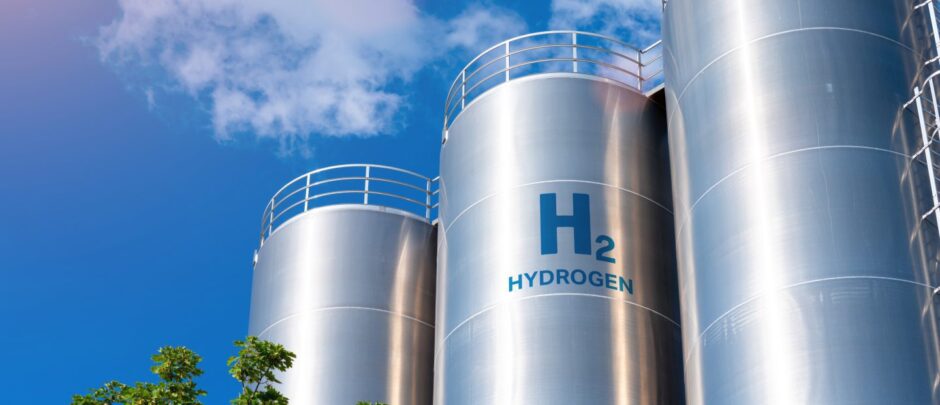
The UK sits on a potential energy goldmine. The British Geological Survey estimates the nation could store up to 3,000 TWh of hydrogen – a staggering figure dwarfing the 60-100 TWh that the Royal Society said would be needed by 2050.
This extensive storage capacity potential, paired with our advantageous geographic position as a trade hub, and our existing expertise in offshore wind and oil and gas makes the UK a natural powerhouse for the growing hydrogen industry.
However, potential alone is not enough.
Without decisive government action to support the development of critical hydrogen storage and network infrastructure, we risk losing out on this opportunity to the detriment of the wider clean energy system.
The government’s commitment to clean power by 2030 is a critical step towards net-zero by 2050, but achieving this ambitious goal requires addressing the complexity of decarbonising our electricity system.
As we increase our reliance on variable renewable energy sources like wind and solar, we also increase our vulnerability to the weather and the inherent intermittency of these power sources.
Large-scale and long-duration energy storage is not just a solution, it’s a necessity. It is needed to ensure the stability and security of the energy system.
UK hydrogen potential
This is where hydrogen comes in – to be used as backup power for when the wind isn’t blowing, and the sun isn’t shining.
As noted, the UK has the potential to be a global leader in the hydrogen industry, but a critical component is our ability to rapidly develop the storage infrastructure needed.
Hydrogen UK estimates that the UK could need 3.5 TWh of storage capacity online by 2030 – a significant but achievable goal given our vast geological potential and the pipeline of projects.
Importantly, geological salt cavern storage is not a new technology. In Teesside, salt cavern storage has been operational since 1972, demonstrating the viability of this technology alongside the UK’s small-scale tank and vessel storage sites.
Co-locating storage, particularly near large emerging hydrogen hubs like industrial clusters, will be essential to build confidence with off-takers, assuring them of supply and accessibility, accelerating the transition.
A robust and comprehensive infrastructure is essential for establishing a successful hydrogen industry and energy system.
Hydrogen backbone
Plans for a UK hydrogen backbone are already underway. Building on our existing expertise and infrastructure from the gas industry, it aims to connect existing energy infrastructure with industrial clusters, international trade hubs, and interconnectors.
To accelerate the adoption of hydrogen energy, the government should commit to developing a core network of 100% hydrogen pipelines, connecting these regional clusters.
Construction of this network should commence no later than 2026. This infrastructure approach is critical.
Grid capacity constraints caused 4.3 TWh of electricity to be curtailed in 2023 and added nearly £1 billion of costs for consumers, which is estimated to balloon to £2.2 billion by 2030 if this issue is not addressed.
Integrating hydrogen and electricity networks is crucial for a resilient, decarbonised energy system.
This holistic approach, which will be strategically coordinated by the emerging National Energy System Operator (NESO), will optimise efficiency and alleviate grid constraints by maximising whole-system benefits and balancing the UK’s energy system.
These networks, supported by interconnectors, will also strengthen energy connections with Ireland and mainland Europe, which could ultimately unlock the UK’s potential as a strategic international hydrogen trading hub, enhancing energy security and resilience across borders.
Action needed
In our manifesto, which we published before the general election, we outlined what the government will need to do to realise this vision.
The industry needs clear guidance and a streamlined delivery process for hydrogen infrastructure.
Empowering local authorities and planning agencies with the capacity and support to expedite development will be crucial to ensuring timely delivery and enabling the critical first wave of industries to adopt hydrogen.
Delaying this pivotal infrastructure risks more than just hindering investment, it threatens our decarbonisation targets and has the potential to increase total system costs in 2035 by £1.7 bn as highlighted in a report from AFRY.
Hydrogen UK calls on the government to provide clarity on targets for storage capacity, along with a clear pathway and timelines.
This would give investors assurance and support rather than constrain hydrogen industry growth, which is critical given the long lead times of new salt cavern storage.
The government must act decisively to ensure critical storage and network infrastructure is delivered on time.
Investment in the UK’s hydrogen storage and network capacity is not merely energy policy, it is a strategic investment in supporting sustainable economic growth, our energy security, and the wider decarbonisation and net zero ambitions.
 © Supplied by Hydrogen UK
© Supplied by Hydrogen UK © Supplied by NZTC
© Supplied by NZTC